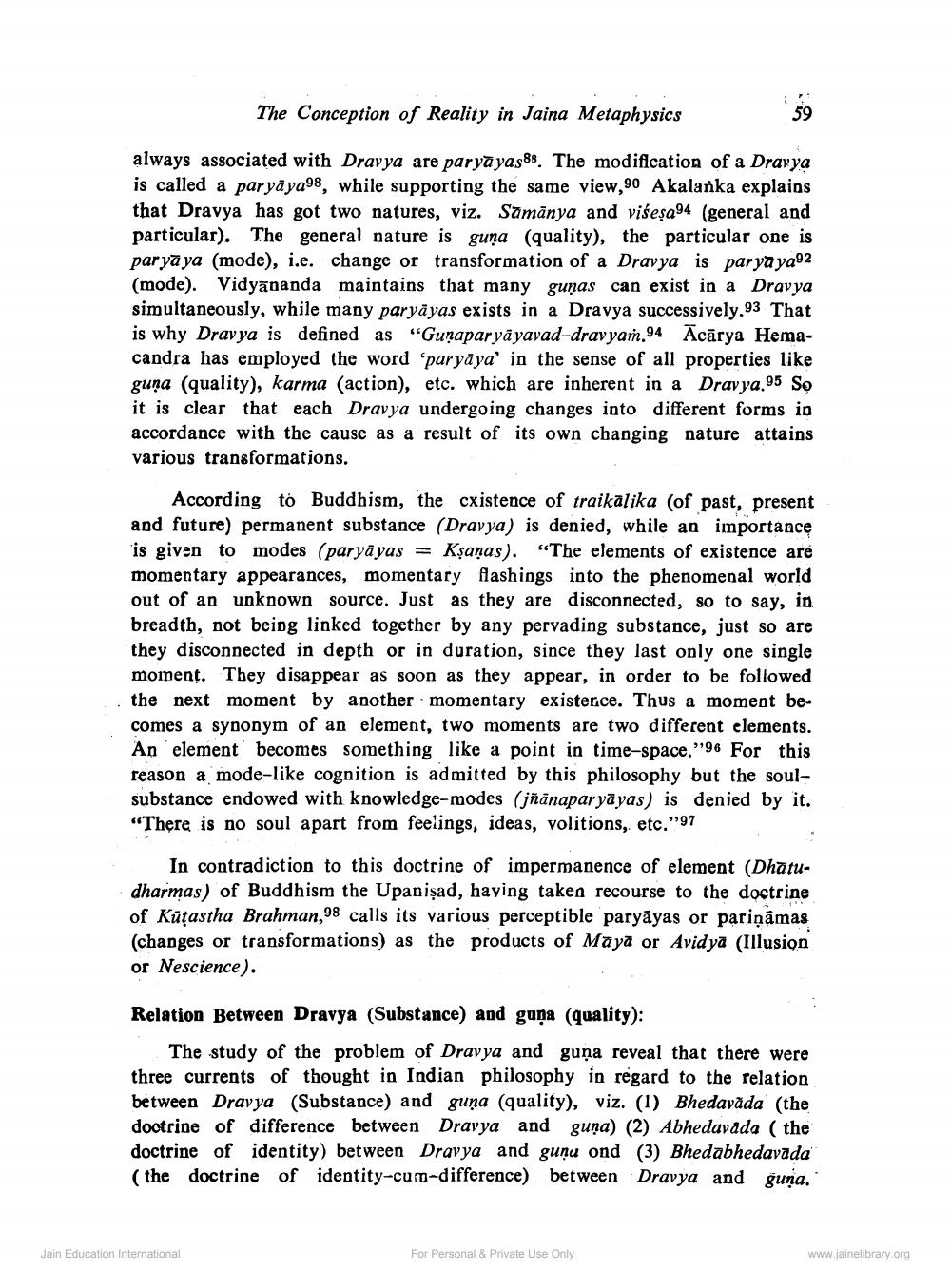________________
The Conception of Reality in Jaina Metaphysics
59
always associated with Dravya are paryāyas88. The modification of a Dravya is called a paryāya98, while supporting the same view,90 Akalanka explains that Dravya has got two natures, viz. Samānya and višeșa94 (general and particular). The general nature is guna (quality), the particular one is paryāya (mode), i.e. change or transformation of a Dravya is parya ya92 (mode). Vidyānanda maintains that many guņas can exist in a Dravya simultaneously, while many paryāyas exists in a Dravya successively.93 That is why Dravya is defined as "Gunapar yāyavad-dravyam.94 Ācārya Hemacandra has employed the word 'paryāya' in the sense of all properties like guna (quality), karma (action), etc. which are inherent in a Dravya.95 So it is clear that each Dravya undergoing changes into different forms in accordance with the cause as a result of its own changing nature attains various transformations.
According to Buddhism, the cxistence of traikālika (of past, present and future) permanent substance (Dravya) is denied, while an importance is given to modes (paryāyas = Kşanas). "The elements of existence are momentary appearances, momentary flashings into the phenomenal world out of an unknown source. Just as they are disconnected, so to say, in breadth, not being linked together by any pervading substance, just so are they disconnected in depth or in duration, since they last only one single moment. They disappear as soon as they appear, in order to be followed the next moment by another momentary existence. Thus a moment becomes a synonym of an element, two moments are two different elements. An element becomes something like a point in time-space.”96 For this reason a mode-like cognition is admitted by this philosophy but the soulsubstance endowed with knowledge-modes (jñānapar yāyas) is denied by it. "There is no soul apart from feelings, ideas, volitions, etc."97
In contradiction to this doctrine of impermanence of element (Dhatudharmas) of Buddhism the Upanişad, having taken recourse to the doctrine of Kutastha Brahman,98 calls its various perceptible paryāyas or pariņāmas (changes or transformations) as the products of Maya or Avidya (Illusion or Nescience).
Relation Between Dravya (Substance) and guņa (quality):
The study of the problem of Dravya and guņa reveal that there were three currents of thought in Indian philosophy in regard to the relation between Dravya (Substance) and guņa (quality), viz. (1) Bhedavāda (the doctrine of difference between Dravya and guna) (2) Abhedavada ( the doctrine of identity) between Dravya and gunu ond (3) Bhedabhedavada (the doctrine of identity-curo-difference) between Dravya and guna.
Jain Education International
For Personal & Private Use Only
www.jainelibrary.org




